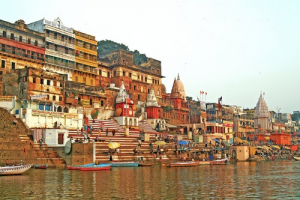Notícies
-
Resultats exàmens oficials en la darrera convocatòria
82 nous aprovats !
-
NOU CENTRE Cambridge School a MATARÓ
Incorporem Newlingua al nostre grup d'escoles
-
CASALS D'ESTIU 2025
Inscripcions obertes per a CAN SALA i HORTUS!
-
VIATGES I COLÒNIES EN ANGLÈS - ESTIU 2025
A Catalunya i a l’estranger!
Why cities are magical places
Dimecres, 1 de Febrer del 2017Read our February article.
I’m from a small town, and like many people who grow up out “in the sticks,” I’ve always been attracted to big cities. I’ve lived in Cardiff, London and now Barcelona since I turned 19, and it’s always been a pleasure. When I moved to London in my early twenties I was besotted with the place; even after over a year of living there, I still got a thrill when crossing the Thames on one of the city’s famous red buses or pottering around Waterloo and the South Bank. Likewise, I never fail to enjoy Barcelona’s famous skyline when I fly into the city, and living just a few minutes’ walk from Gaudí’s Park Güell is something I still can’t entirely get my head around - and it’s been seven years!
If it wasn’t clear from the title and that opening paragraph, I really believe that cities are magical places. The “why” as to why I believe that, however, is difficult to explain. A sense of place and belonging anchors us to this world, of course, and the relationship between memory and geography is something so fundamental that it isn’t ever really considered. What makes a city, and what makes a city special? What gives a city its own character? To overthink these things, subjective as they are, is, to some degree, to take the magic away.
When I think back on some of the iconic cities I’ve visited, it’s the feeling that I remember more than anything else. I remember an overcast Florence that was stunning all the same, its terracotta shades and stately Ponte Vecchio evoking the rich sense of culture it is so famed for. I recall the weight of history that I was wrapped up in after visiting the Anne Frank House in Amsterdam, and the beauty of the city’s distinctive architecture and calm waterways. New York City is a barrage of vivid memories, from the Orthodox Jewish streets of Williamsburg, Brooklyn to a summer storm in Manhattan that led to a double rainbow arcing over the island; San Francisco and its redwood surrounds are a foggy, exhilarating blur; Paris a glittering, regal gem; New Orleans a humid, intoxicating sprawl; Beijing an endless, sometimes mystifying experience.
There is no one thing that “makes” a city, just as there is no one thing that makes it “magical,” however exaggerated you might find that particular adjective. Of course cities can be miserable places, too; smelly, crowded and stressful. (Spare a thought for the residents of London during the summer of 1858, when the dumping of sewage and human waste into the Thames led to an event named ‘The Great Stink’, which brought with it several outbreaks of cholera.) No city is without its disadvantages: petty crime, myriad problems caused by gentrification and air pollution are, sadly, common occurrences in the modern world.
Look past this, though, and you’ll find that each and every city you is in possession of something intangible; something that makes it unique. That could be its dialect, or a custom, drink or food unique to the place; it could be its architecture, its parks, or its monuments. More likely, it will be a combination of all these factors. I find it a shame that when people go on city breaks they’ll rarely stay more than three or four days, as this is just enough time to get the taste of a place. As impressive and necessary to see as they may be, a city is far more than just its famous sights: it’s the quieter neighbourhoods, local cafés and, basically, the less tourist-y side of things that linger longest in the memory; the secrets you uncover and the surprises that lie in wait.










 Tel. 93 655 05 58
Tel. 93 655 05 58 Enviar WhatsApp
Enviar WhatsApp



![[...]](https://www.cambridgeschool.com/xtra/imgs/loading.gif)